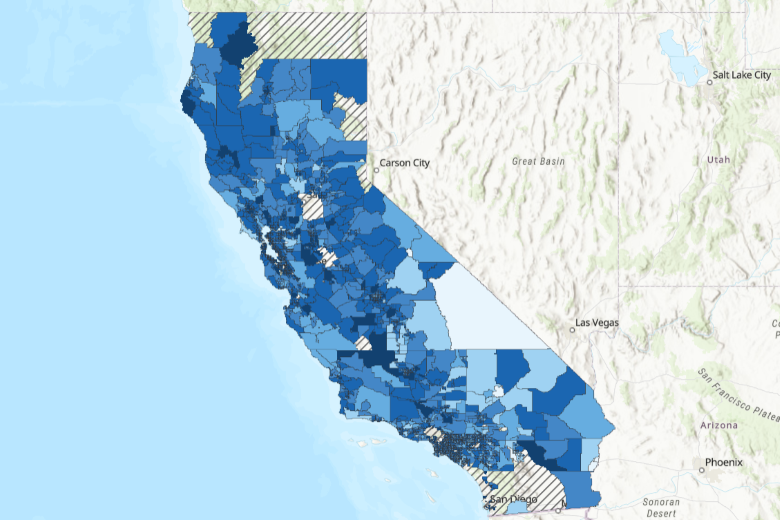Assembly Bill 2127 (Ting, 2018) tasks the CEC with assessing the charging infrastructure needed to support California's ambitious zero-emission vehicle adoption targets. Released in July 2021, the first assessment found that in order to support 8 million light-duty passenger electric vehicles (EVs) and 180,000 medium- and heavy-duty EVs in 2030, nearly 1.2 million and 157,000 chargers were needed, respectively. When deploying charging on such a large scale, one must consider the impact on the electric grid system. The EVSE Deployment and Grid Evaluation (EDGE) tool, developed by the CEC, aims to assist users in determining suitable locations to deploy EV chargers based on available grid capacity and expected energy demand generated by the CEC's EV infrastructure projection models. Using the California Statewide Travel Demand Model (CSTDM) definition of traffic analysis zone (TAZ) boundaries, EDGE compares EV charging demand to aggregated grid capacity data sourced from the California investor-owned utilities' grid needs assessment (GNA) maps to generate Capacity Indicator Metric (CIM) values throughout the state. Areas with negative CIM values have modeled charging demand that exceeds the available capacity and could need upgrades to accommodate charging infrastructure projected to exist there.
Currently, the EDGE tool has access to limited utility data for primary distribution circuits through 2025 and does not have access to any secondary distribution grid data. This restricts insight into regional traffic analysis zones (TAZs), as currently shown, and prevents analysis at specific sites. For example, for TAZs showing exceeded capacity, some sites within that TAZ may contain sufficient capacity for EV-related upgrades and vice versa. With access to better utility data, the EDGE tool can show more accurate data at the site-level, with grid-EV load comparisons through 2035.

EVSE Deployment and Grid Evaluation (EDGE) Tool
EDGE helps users identify regions of the grid that could suitably host EV chargers or may need capacity upgrades. It is recommended to view the EDGE tool on a desktop computer for best experience.
References
California Energy Commission
California Department of Transportation
National Renewable Energy Laboratory
Lawrence Berkeley National Laboratory
Data last updated: May 11, 2023
Data Collection Information
Utility capacity data is updated annually in August. EV charging load data will be updated when new information becomes available as per the biennial AB 2127 assessment.
Citing
Please cite use of these data and images.
California Energy Commission 2023. California Energy Commission, EVSE Deployment and Grid Evaluation (EDGE) Tool. Data last updated [insert date last updated]. Retrieved [insert date retrieved] from [Dashboard URL].
